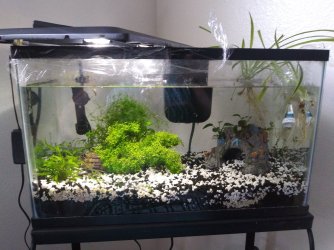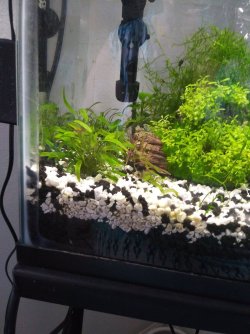CaptainBarnicles
Moderate Pleco Tolerator
Staff member
Global Moderator ⚒️
Tank of the Month 🏆
Pet of the Month 🎖️

Easy-Life is a Dutch brand, the pot literally gives me no information on what the sticks contain except that they're made of clay....I'm not expecting miracles here, they got good reviews but I'm sure they won't give me the same results I get from Flourish@CaptainBarnicles it will be intersting to see the effect of the Easy Life root sticks. This will obviously take several weeks to assess after the change from Flourish Tabs. I know nothing about Easy Life sticks. Years ago there was a root stick manufactured by Nutrafin, named Life-Gro or something, and wow, did it make the swords explode in my 90g tank. It lasted one year, then a new stick has to be used. Unfortunately, they stopped making these, and in 10+ years I could not find them anywhere online. I am not suggesting "root sticks" are this good, it depends upon what they contain.
Aside from incredible growth, there is another advantage to Seachem's Flourish Tabs. And that is that somehow the nutrients do not get into the upper water column, but are only used by the roots. I've no idea how Seachem managed this, but it has been proven accurate. The benefit is that you cannot really over-fertilize with the tabs, which means problem algae will not occur from these. It can if liquid fertilizer is overdosed.



